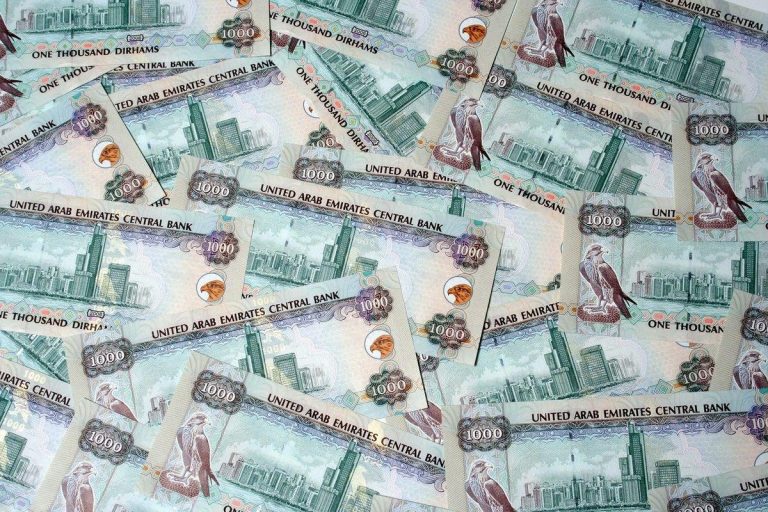Investors’ perceptions of the sovereign debt of Dubai and Bahrain may mark a significant shift in coming days or weeks: the cost of insuring Dubai’s debt against default may drop below the cost for Bahrain for the first time in over three years.
Dubai’s five-year credit default swaps have narrowed dramatically since the emirate was hit by a corporate debt crisis at the end of 2009.
The catalyst for the crisis – weakness in the real estate market – has not been resolved, but progress in restructuring debt and economic growth in Dubai have convinced most investors that disaster will be avoided.
Dubai’s CDS are now quoted at 372 basis points, a far cry from levels around 650 bps hit days after Dubai World announced it needed to to restructure some $25bn in debt in late 2009.
CDS hit lows of around 320 bps last year; they then soared back above 500 bps briefly as the euro zone debt crisis worsened, but have since mostly been in a downtrend.
“Dubai has seen lot of positive news in 2012, both in terms of improving economic fundamentals and refinancing/repayment of dues,” said Biswajit Dasgupta, head of treasury and trading at Invest AD.
“The lack of huge new supply and the increased risk appetite globally has turned attention towards Dubai and has helped drive cash and CDS spreads tighter from the 450-475 range to the 375 mark in the last four months.”
By contrast, Bahrain’s CDS have been kept high by concern that continuing anti-government protests there could hurt its economy and status as a regional financial hub.
Although the economy has resumed growing, the growth has been based on high oil prices and government spending; much private sector activity has stayed weak.
Bahrain CDS are also at 372 bps, having mostly moved sideways since the start of the fourth quarter of last year; they are close to their highest levels since mid-2009. Before the political crisis erupted early last year, they traded in the 175-200 bp area.
“All things being equal, I wouldn’t be surprised to see Dubai CDS trading inside that of Bahrain,” said Chavan Bhogaita, head of the markets strategy unit at National Bank of Abu Dhabi.
“While sentiment towards Bahrain is still negative, or at best, stable, investor confidence in respect of Dubai seems to be gathering momentum. As far as Bahrain is concerned, there have not been any material developments or announcements that would provide clear direction to the CDS.”
Analysts note that the regional CDS market is not very liquid, so cash prices on sovereign bonds may be more accurate indicators of perceived risk.
“The CDS market for Middle East credits isn’t as liquid as that in other more developed regions, where CDS can actually be a better barometer of investor sentiment and perceived creditworthiness than cash bonds,” NBAD’s Bhogaita said.
There has been less convergence between outstanding sovereign bond maturities of Dubai and Bahrain. Dubai’s $750m, 7.75 percent bond maturing in October 2020 is yielding 6.47 percent while Bahrain’s $1.25bn, 5.5 percent bond also maturing in 2020 is at 5.81 percent.
Yields on both bonds have plunged since October, when the market started to believe the euro zone might avoid a systemic crisis, but the tightening in Dubai – about 200 bps – has been greater than Bahrain’s roughly 135 bps.
“The Bahrain 20s and Dubai 20s have both rallied recently but haven’t converged – Bahrain remains around 70 bps inside Dubai,” said Gabriel Sterne, London-based economist at Exotix.
“Dubai has shown steadily improving prospects for a while now, though the spike in yields in October 2011 showed that it is still a high beta (high-risk) trade. But…I think there is some further room for rally on both.”
Both Dubai and Bahrain are believed to have strong backing from a cash-rich ally in the event of a crisis. Abu Dhabi stepped in to bail out Dubai in 2009 and could be expected to do so again if that was absolutely necessary, given its deep pockets and desire to avoid any default that could shake confidence in the UAE as a whole.
Meanwhile, Saudi Arabia intervened militarily to stabilise Bahrain last year and was behind a pledge to Bahrain of $10bn of aid from rich Gulf countries over coming years to help it cope with the unrest.
Many analysts also expect Saudi Arabia to step in with additional aid for Bahrain if that is necessary to solve budget problems, given the importance of the island’s stability to the region.
Investors will not focus exclusively on these implicit guarantees, which could be tricky to implement, however; the market will also look at the strength of the two economies and the attractiveness of their growth strategies.
In this respect Dubai, which is aggressively diversifying its economy into trade, tourism and financial services, may have the edge – especially since Dubai authorities appear to be stepping up efforts to communicate with investors.
Since December, government officials and government-linked enterprises have made a string of positive statements about Dubai’s ability to tackle its debt obligations.
“Dubai’s economy is nearly three times larger than Bahrain, while per capita income is also double. Most importantly, Dubai faces none of the sectarian tensions that Bahrain is engulfed in,” Raza Agha at RBS said in a recent research note.
“Given this comparison, we think fundamentals do not warrant that Bahrain trade inside Dubai.”
Two Dubai debt maturities in particular this year may help to determine whether Dubai’s sovereign yield converges fully with Bahrain. Dubai International Financial Centre Investments has a $1.25bn sukuk due in June, while ports operator Jebel Ali Free Trade Zone (JAFZ) has a $2bn-equivalent sukuk maturing in November.
If investors obtain more clarity in coming months on how repayment of these sukuk will be financed, they may become more willing to bid up Dubai’s sovereign bond.








